Hidradenitis Suppurativa Chest - Stage I (Mild)
A small bump or nodule on or under the breast.



Hidradenitis suppurativa (HS) symptoms & pictures
The symptoms of hidradenitis suppurativa (HS) are complex and can change over time. When HS symptoms reappear or worsen, it’s called a flare.
HS might begin as a bump in your inner thigh, a lump in your armpit that seems like a cyst, or even what looks to be a pimple on your groin. But as time goes on, these bumps—also called nodules or abscesses— can:
- Become large and painful
- Last for months
- Leak foul-smelling pus when they rupture or burst
- Become connected by tunnels forming deep in the skin
- Leave a scar when they heal
- Sometimes clear but reappear in the same spot
The stages of HS
Since HS can progress over time, it’s important to pay close attention to any changing or worsening symptoms. But because there’s a lot more to HS than what you can see on the skin, it’s especially important to work with a dermatologist to determine how severe your HS may be, and if it has progressed since your last visit.
Dermatologists often measure the severity of HS in stages—from Stage I (mild), to Stage II (moderate), to Stage III (severe).*
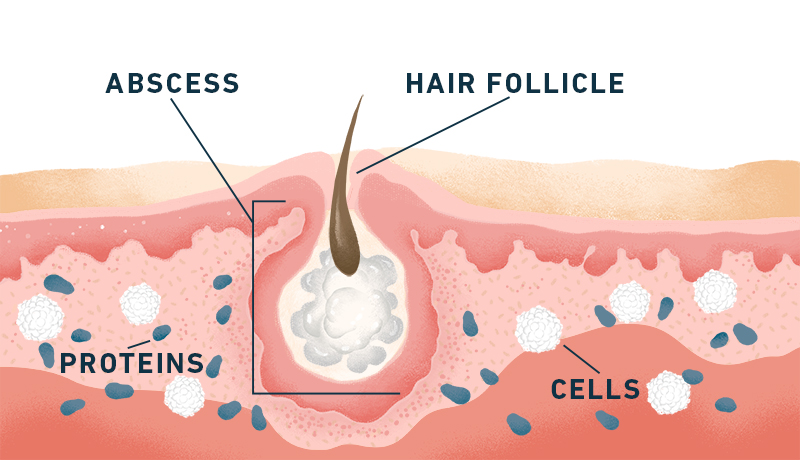
Stage I (mild)
Usually shows up as one or more abscesses with no scarring or tunneling under the skin. Flares may clear up but then come back during any stage.
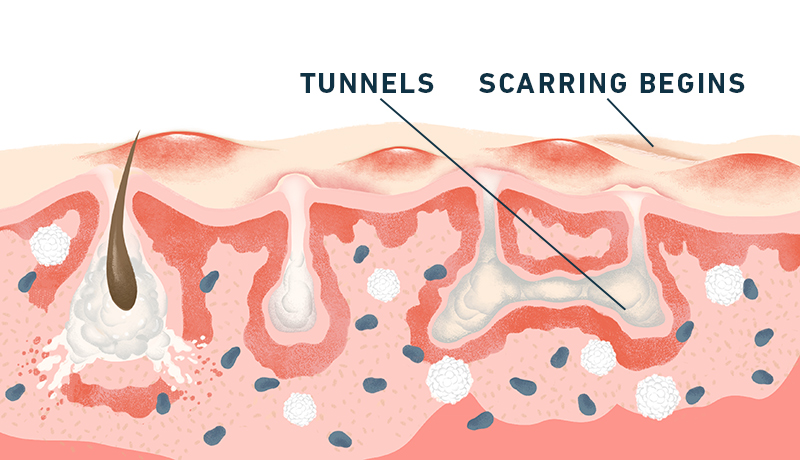
Stage II (moderate)
Abscesses are widely spread and may become connected by tunnels. Tunnels (also known as tracts) can start forming deep in the skin, though they’re not always visible on the surface. Scars begin to form on the surface and within the deeper tissue.
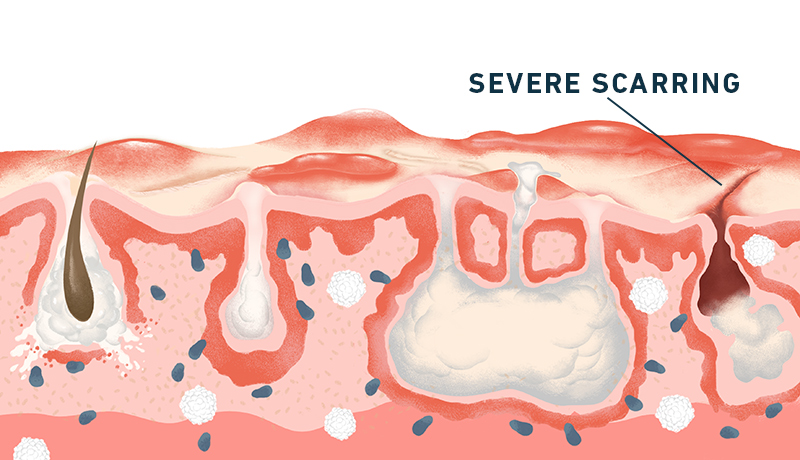
Stage III (severe)
Large areas of the body are covered by abscesses and scarring with widespread tunneling beneath the skin, connecting multiple abscesses.
*These descriptions are based on a well-accepted assessment of severity called the Hurley Staging System.



Think you or someone you care for may have HS?
Be sure to discuss any signs and symptoms with a dermatologist as soon as possible.
Hidradenitis suppurativa pictures
HS can affect men and women in different areas of the body. The HS pictures below show some of these differences, as well as how symptoms can vary based on the stages of HS.
HS in Females
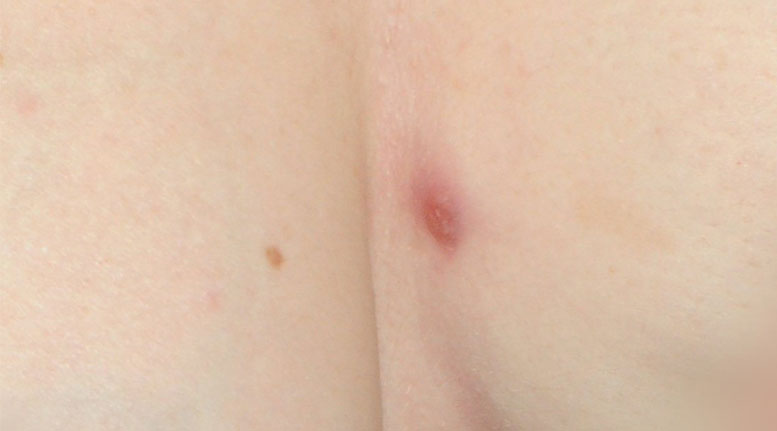
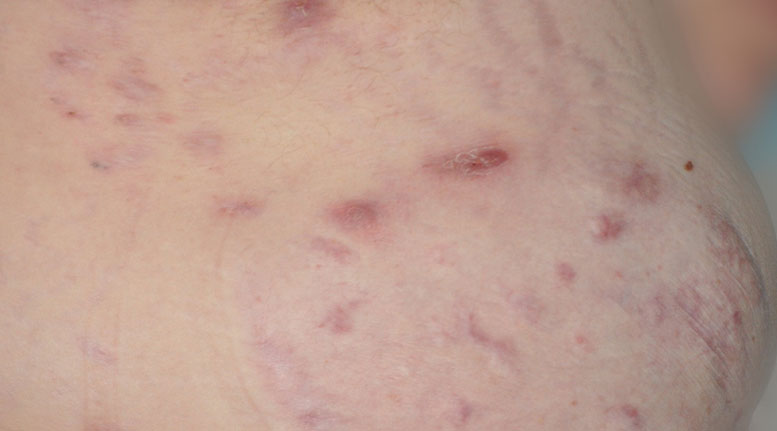
Hidradenitis Suppurativa Chest - Stage II (Moderate)
Scars and lesions are visible on the breast area.
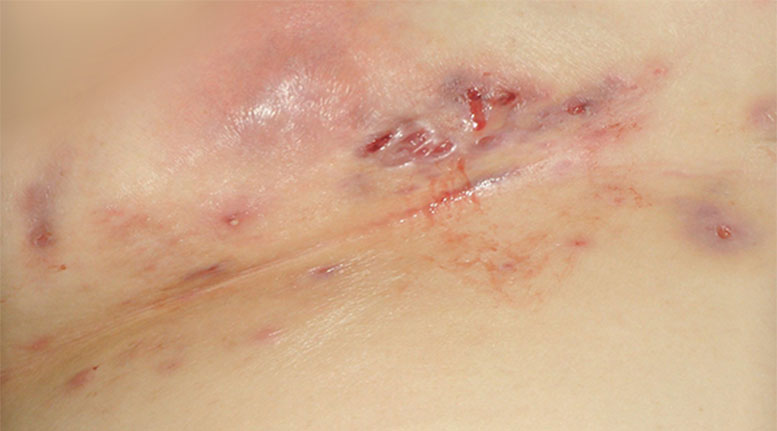
Hidradenitis Suppurativa Chest - Stage III (Severe)
Scarring and draining of lesions can be seen under the breast.
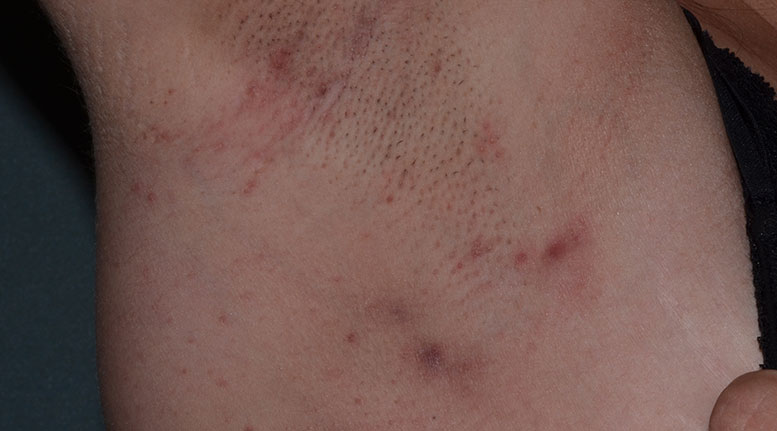
Hidradenitis Suppurativa Armpit - Stage I (Mild)
Small bumps or nodules in the armpit.



Hidradenitis Suppurativa Armpit - Stage II (Moderate)
Some scarring and fistulas in the armpit.
Photo courtesy of Dr. Martin Miehe
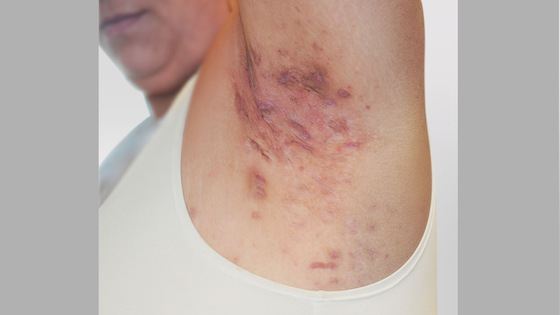

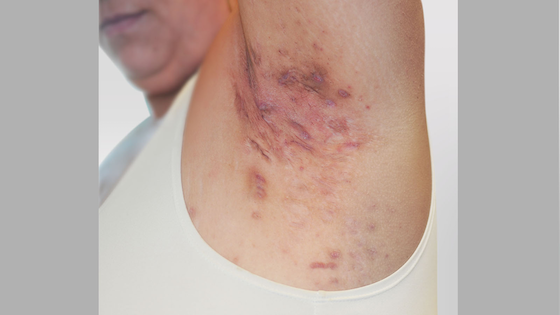
Hidradenitis Suppurativa Armpit - Stage III (Severe)
Scarring and draining of fistulas in different parts of the armpit.
Photo courtesy of Dr. Marc Boucier
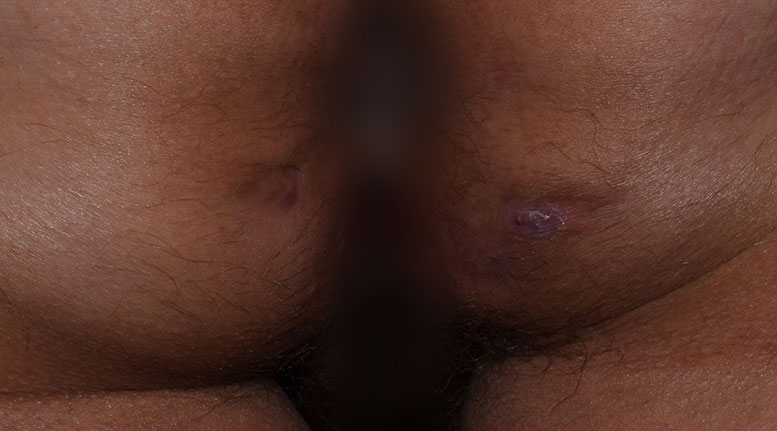
Hidradenitis Suppurativa Buttocks - Stage I (Mild)
Some scarring and bumps or nodules on the buttocks.

Hidradenitis Suppurativa Buttocks - Stage II (Moderate)
Scarring over nodules on the buttocks.
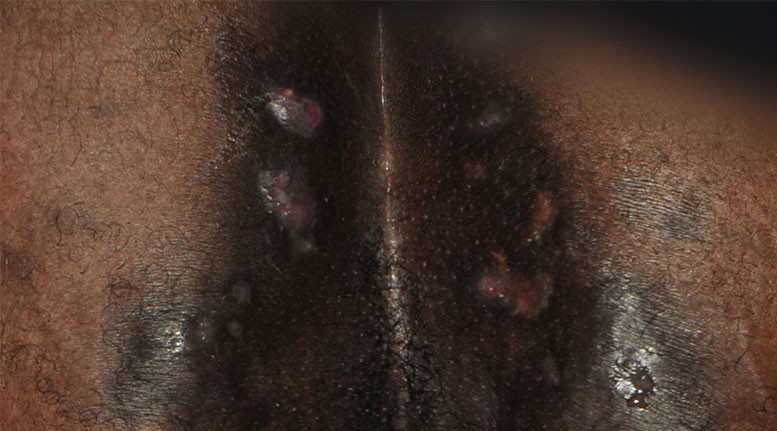
Hidradenitis Suppurativa Buttocks - Stage III (Severe)
Sinus tract formation under the skin and large nodules on the buttocks.
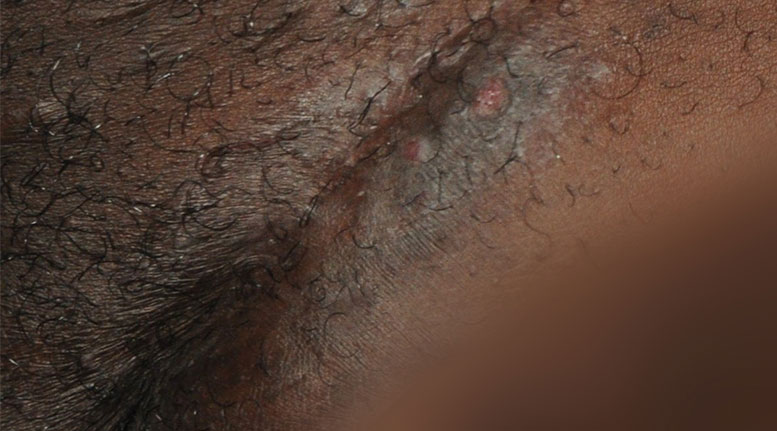
Hidradenitis Suppurativa Groin - Stage I (Mild)
Multiple small bumps or nodules in the groin.
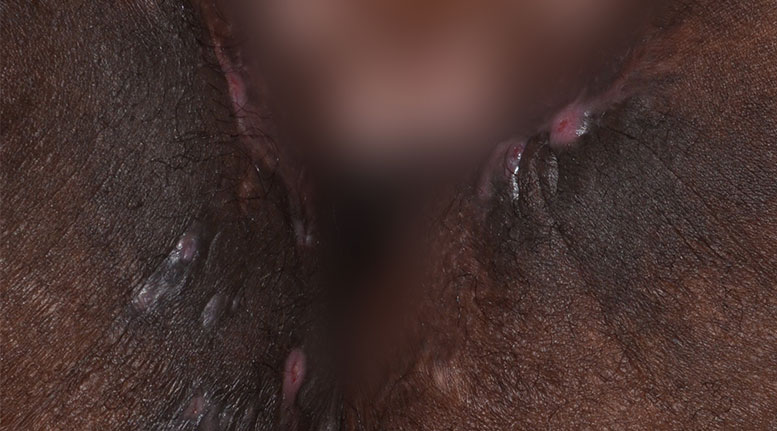
Hidradenitis Suppurativa Groin - Stage II (Moderate)
Open lesions in the groin.
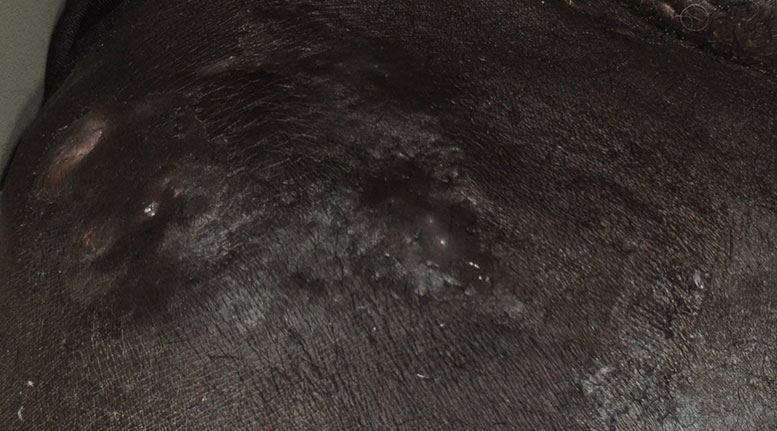
Hidradenitis Suppurativa Groin - Stage III (Severe)
Nodules connected with sinus tracts under the skin in the groin.
HS in Males
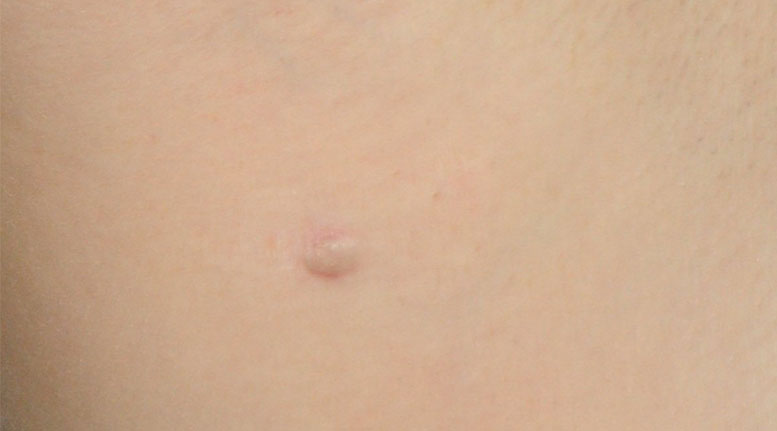
Hidradenitis Suppurativa Armpit - Stage I (Mild)
A small bump or nodule in the armpit.
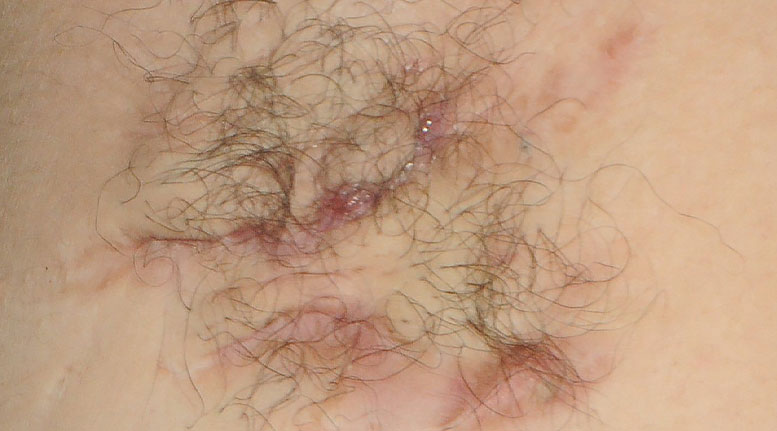
Hidradenitis Suppurativa Armpit - Stage II (Moderate)
Some scarring and fistulas in the armpit.
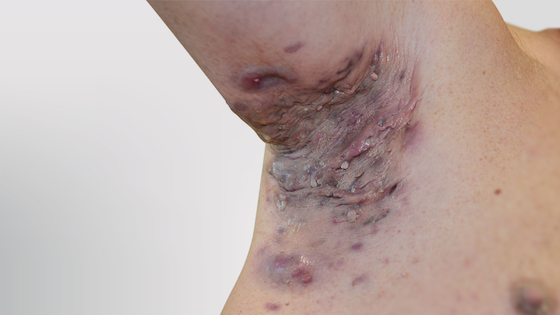

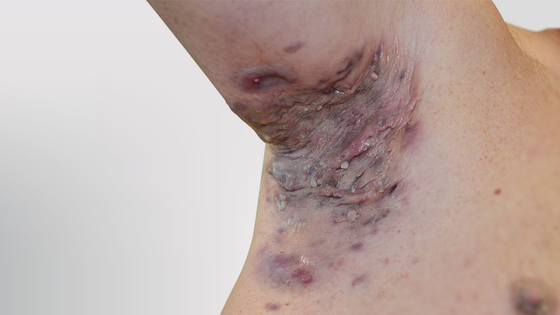
Hidradenitis Suppurativa Armpit - Stage III (Severe)
Scarring and draining of fistulas in different parts of the armpit.
Photo courtesy of Dr. Marc Boucier
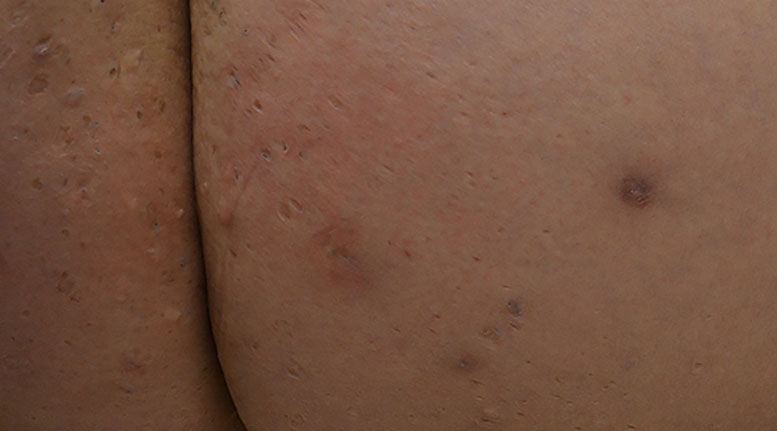
Hidradenitis Suppurativa Buttocks - Stage I (Mild)
Mild scarring over bumps or nodules on the buttocks.

Hidradenitis Suppurativa Buttocks - Stage II (Moderate)
Large nodules on the upper buttocks.

Hidradenitis Suppurativa Buttocks - Stage III (Severe)
Sinus tracts under the skin and severe scarring on the buttocks.
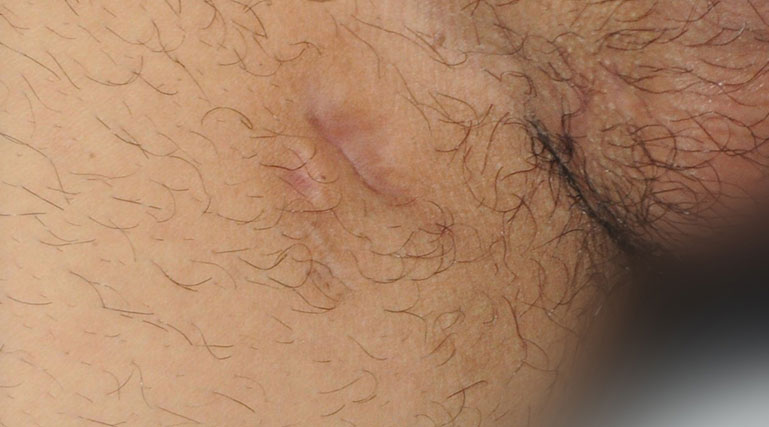
Hidradenitis Suppurativa Groin - Stage I (Mild)
Small bumps or nodules and some scarring in and around the groin.
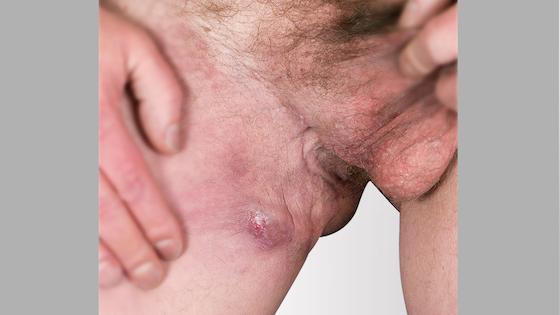

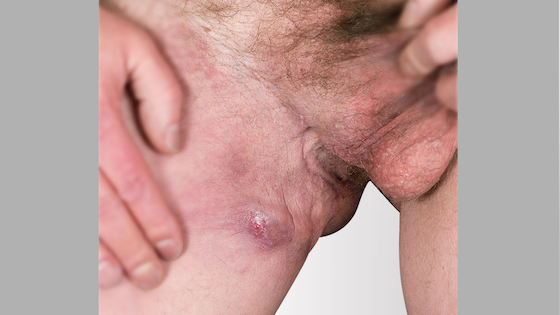
Hidradenitis Suppurativa Groin - Stage II (Moderate)
Abscesses in the groin.
Photo courtesy of Dr. Andreas Pinter


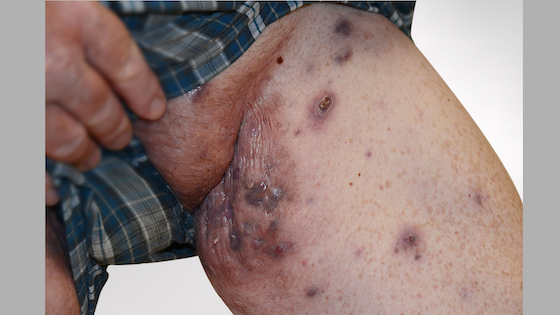
Hidradenitis Suppurativa Groin - Stage III (Severe)
Ruptured, draining abscesses in the groin with scarring over sinus tracts.
Photo courtesy of Dr. Marc Boucier
How is HS diagnosed?
To diagnose hidradenitis suppurativa, your dermatologist will examine your skin closely and ask you a number of questions about your signs and symptoms. If any of your lesions are leaking fluid, your doctor may swab the fluid to see if you have an infection.
Since HS can sometimes look like other skin conditions, getting the right diagnosis from a dermatologist is key. That’s because an accurate diagnosis can help you and your dermatologist determine appropriate care for you.
Recommended for you:
You may have HS, but do you speak it?
Learn the HS terms you need to know with our HS dictionary.
Learn now >
